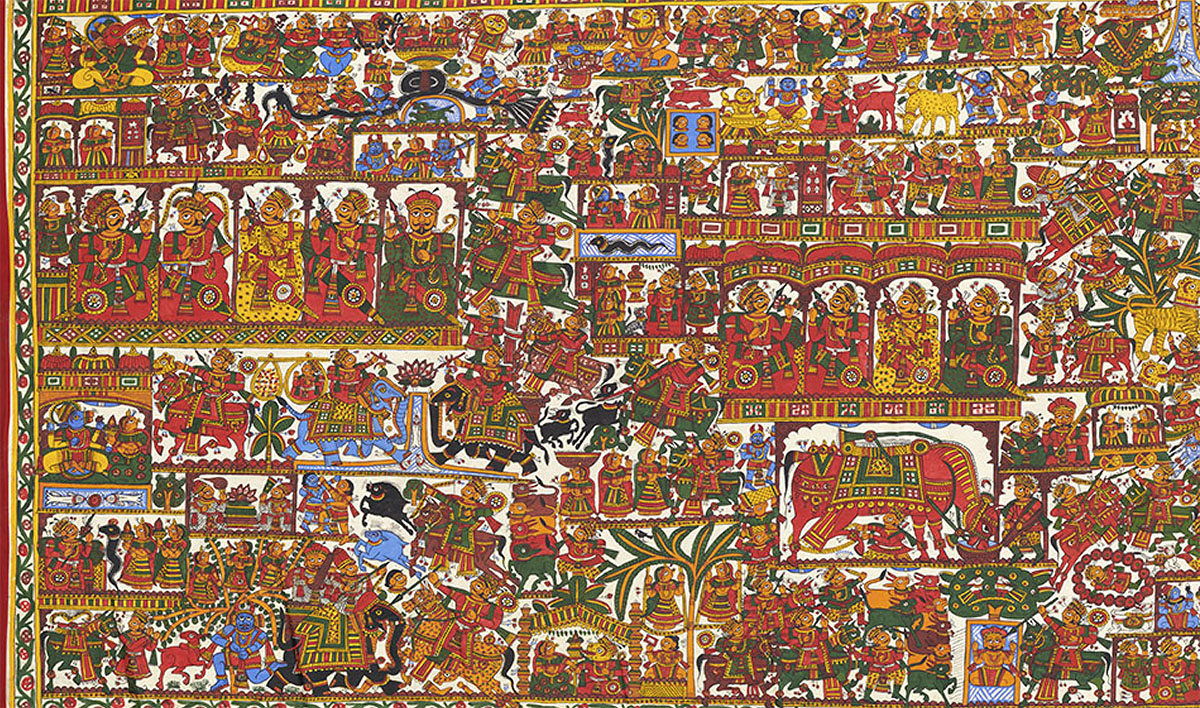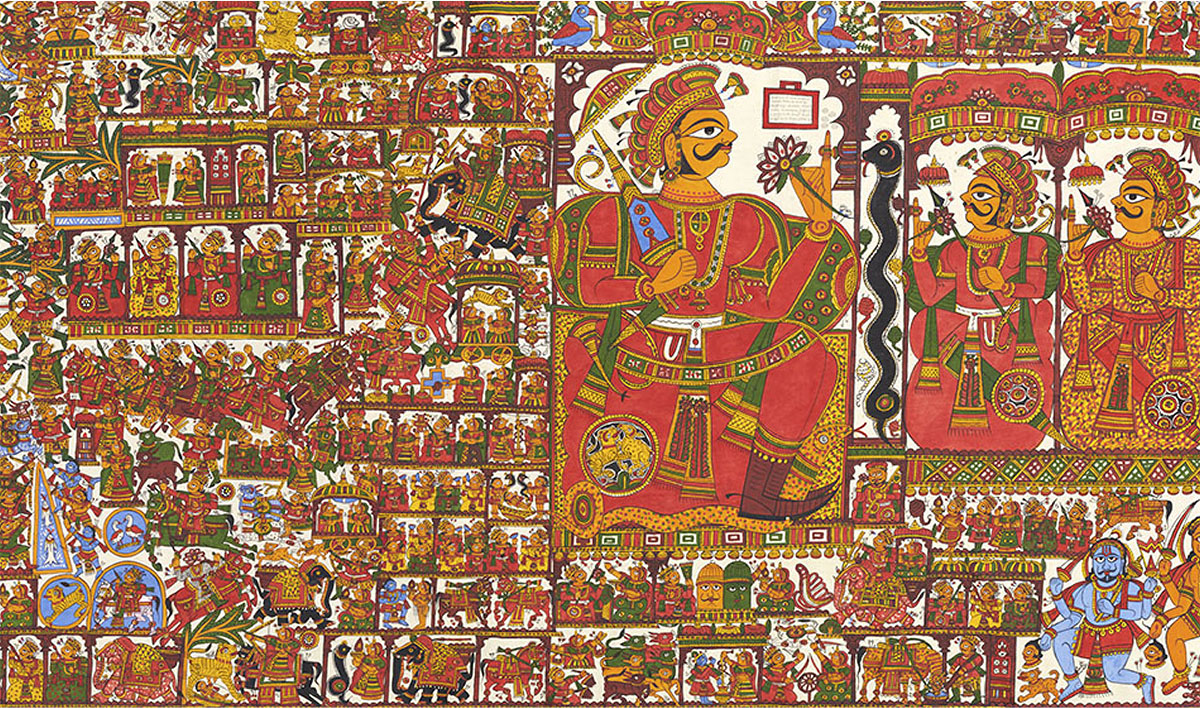ARTICLE
Pabuji Ki Phad
A devotional tradition of scroll paintings from Rajasthan wherein the epic of Pabuji, the local folk deity, is narrated through a combination of visual, oral and performative arts, Pabuji ki phad means “Pabuji of the painted scroll” where phad refers to “scroll”. The epic of Pabuji is performed in the western Thar desert region centring in cities such as Jaipur, Shekhawati, Jodhpur and Jaisalmer and emerges from a fourteenth-century hero revered for his sacrifice to save cows. Therefore, he is worshipped by herdsmen, agrarian communities and nomads. Pabuji finds mention in a few written sources, implying that the communities that worship him, such as Nayak Bhils, used oral narratives and have remained largely unlettered because of their non-dominant caste status. The epic was performed by musicians who would move within their particular feudal demarcations and the craft was passed on from generation to generation. The musicians, called bhopas (devotee performers) and their wives, bhopis, perform the epic as a divine vocation, acting as intermediaries between Pabuji and his devotees.
Pabuji ki phad is traditionally rendered on a red textile that bears the principal characters, the figures of Pabuji and Devanarayanji – a reincarnation of Vishnu. The bhopas would commission Chiteros (painters), members of the Chhipa caste, to create the phads to use in their performances. The phad used to be very large with the paintings of Pabuji being 13 arm-lengths long and Devnarayanji’s being 30 feet long. They were painted using hand-woven coarse cotton cloth, which would be soaked overnight to thicken the threads. It was then starched with rice or wheat flour and then dried. The surface would be rubbed with moonstone for smoothening. The processing and painting both use only natural goods. Colours were naturally extracted and each had its specific purpose. Yellow was for creating the outline and painting the ornaments and clothes of the deity, orange for limbs and torsos, green for vegetation, brown for architectural structures, blue for water and curtains and red for royal clothing, flags and thick borders. The painted figures are distributed through the canvas, their size is determined by their social status as well as their prominence in the narrative and they are flat, facing each other instead of facing the audience.
Most of the narratives follow a conventional schematic formula and illustrate scenes such as Pabuji flanked by his couriers atop his horse or holding court, his mother Kesar Kalmi or him and Gogaji, the snake god, as warriors on horseback. While the equestrian images share an affinity with paintings in Bhimbetka caves, the more complex narrative scenes bear similarities to visual storytelling seen in murals at Ajanta caves. In these paintings, most of the available space is filled with figures of humans and animals, processions, battles, thoroughfare and decorative motifs which make the chronological unfolding of narrative difficult to glean. The painting itself is not done to follow an order of chronology but rather represents the narrative by placing its elements geographically. It is here that the bhopa and bhopi become essential to its storytelling. Performed two ways – either two bhopas narrating verse by verse playing the kettledrums or with a married duo of bhopa and bhopi singing to the bhopa’s tune of the ravanhatto (fiddle) – the entire epic is narrated and explained in the dialect native to the region where the performance is being held. Moreover, as a mobile shrine, the phad is a sacred object; it is not opened before nightfall, the ground of its consecration must be swept and sprinkled with water, incense should be burnt before it and when it becomes too worn out, it is immersed in a suitable holy site, ideally the Pushkar lake.
The tradition of performance and phad painting have become increasingly dislodged from one another as the paintings have become more secular. Shree Lal Joshi, set up Joshi Kala Kunj in Bhilwara, Rajasthan in 1960 to train artists from outside his family in the art of phad. Through his efforts and those of his sons, there was a revival of the art and the school was consequently turned into a Chitrashala where over three thousand artists have since been trained. Similar efforts have been made by other practitioners of phad painting. In this process, the subject of phad has broadened and has come to include characters and stories from the Mahabharata, Ramayana, Hanuman Chalisa and Panchatantra. Producing paintings for the market as decorative and artisanal goods, their size has also significantly shrunk to as small as two, four and six feet.
Bibliography
Our website is currently undergoing maintenance and re-design, due to which we have had to take down some of our bibliographies. While these will be re-published shortly, you can request references for specific articles by writing to hellomapacademy@map-india.org.









